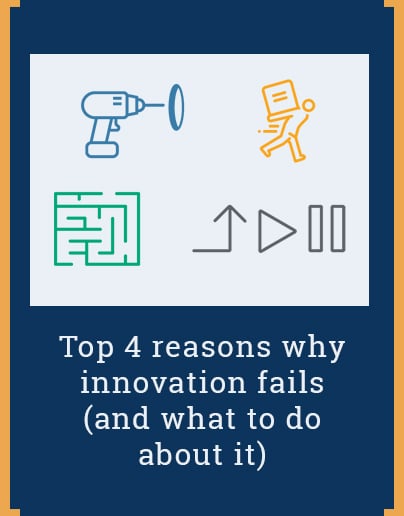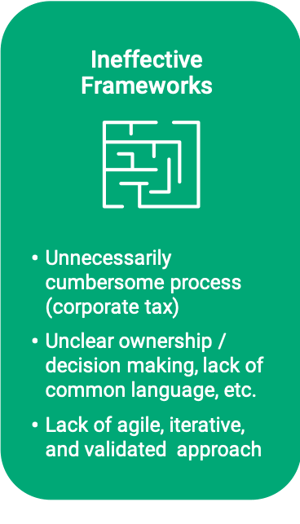Depending on which business article you read, the percentage of innovation initiatives that fail is somewhere between 70 and 95%. In other words, it’s high. But why is it so high? And what can you do to succeed? Here are the 4 top reasons why we have seen innovations fail.
Forgetting the Customer 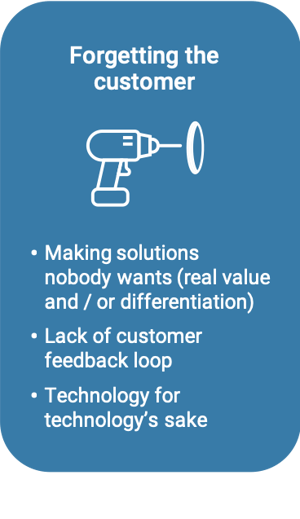
When working with clients, the easiest trap we’ve seen innovators fall prey to is building something no one wants.
We get distracted by shiny things. We use new technology because its new, or because someone told us a platform could solve all of our problems, instead of deliberately choosing the best technology for the job. We fall in love with our ideas and solutions without ever talking to the customer to understand if there was problem in the first place.
“People don't want to buy a quarter-inch drill. They want a quarter-inch hole!". Customers buy solutions to their problems—not the tools or products themselves. There may be cheaper, easier, less messy or less complicated ways to make a hole than buying a drill. Finding those ways is how innovation disrupts the drill market.
To innovate, you must look for real problems and get customer feedback on a regular basis to ensure you’re on the right track. While this sounds simple, we make excuses for it not happening. Why? Because it's uncomfortable to stop strangers on the street and ask for feedback on what could be a terrible idea. So instead we tell ourselves that we know our customers well enough, or that it is difficult to get time with them, and we will make assumptions for them. And what occurs, which we’ve seen happen, is a company that spends a million dollars developing an idea before ever validating with their customers that it was a good idea. Guess how well that turns out?
Unrealized Commitment 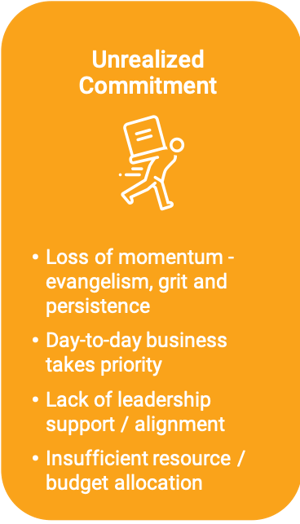
Innovation is messy. It requires persistence and grit and being really uncomfortable over long periods of time.
Edison is considered the innovation granddaddy. He has 1,000 patents to his name. You know how many attempts it took him to produce the battery? 10,000. Sir Dyson and the vacuum? 5,000 prototypes and 15 years to get his cyclone technology working properly.
While we don’t recommend asking your organization to give you 15 years or 10,000 attempts to be successful, everyone involved in an innovation venture should understand upfront that there is going to be failure before success. Without this upfront commitment and realistic expectation setting, your innovation development won’t have enough runway to be successful.
Two frameworks for addressing this uncertainty are to manage your innovations like a balanced portfolio or plot ideas on a three horizons model. Both of these frameworks drive the same point: different types of innovations need different considerations. Some innovations are small, incremental improvements that step a product (and your organization) forward and others are big, radical, transformative innovations that carry a lot of risk, but also a lot of reward. Spreading your focus strategically and ensuring many “small wins” will give your organization more appetite for bigger efforts.
Ineffective Frameworks
One thing you don’t want to hear when people look at the process for doing innovation within your organization is, “Forget it. It’s not worth it.”
Don’t manage the innovation process like you do the rest of the business. This “corporate tax” on new business ideas—is the cost of the red tape and heavy processes that stop innovation in its tracks. It will drown your team and your ideas.
You need process but only enough to guide instead of overwhelm and dissuade. You need to make sure teams are asking the right questions and ideas are profitable and scalable before too much is invested, but you don’t want to make it harder than it has to be.
Note - We will be discussing innovation process frameworks we’ve seen work for clients in a future insight post.
Inability to demonstrate success 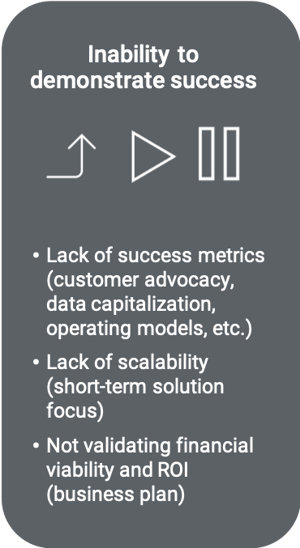
What is innovation success? Is it revenue? Is it market demand? Is it how quickly your organization learns from an idea—especially when it fails?
Measure what matters at the moment. If a new idea is at the stage where you are attracting early adopters, don’t focus on measuring profit—measure adoption rates. Nurturing a fragile idea from beginning to end means protecting the idea from meaningless metrics that will kill it too early.
“90% of what we do isn’t going to work. But 100% of what we do should be informing our decisions.”
- USAFC Innovation Officer
Each idea is going to be a little different, and in each stage of its lifecycle, something else is going to be matter. Many people like to see innovation programs as idea factories, but something we have seen work really well is to see successful innovation programs as being idea killers. Measuring how quickly your team kills bad ideas, and therefore with the least amount of investment possible, is a lean way to surface the good ideas fast.
This is where a strong operating framework for managing innovation will be your lifeline. Not only will it help weed out the bad ideas quickly, but it will also help determine the feasibility of your ideas. Because you may have a tremendous idea, but if you can’t produce it for less that you can sell it for, or if it’s not scalable to the market outside of your early adopters, it’s going to fail. Your process has to constantly be forcing you to decide which ideas to keep, which ones to change, and which ones to put down for a little while or indefinitely.
For more on success metrics and innovation management to kill those bad ideas as your business innovates, check out our other Innovation Insights on key features that drive customer satisfaction and encourage innovative products or services.

